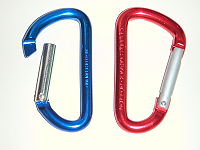
Photo from wikipedia
Abstract A simple, portable and cost effective design of single (1 T) and triple (3 T) needle-plate geometry of atmospheric pressure plasma probes was used to study the degradation of… Click to show full abstract
Abstract A simple, portable and cost effective design of single (1 T) and triple (3 T) needle-plate geometry of atmospheric pressure plasma probes was used to study the degradation of aqueous effluent solution made up of Rhodamine B (Rh-B). Mainly these torches were used to generate the Advanced Oxidative Species (AOS) useful for the degradation of 10−4 M aqueous solution of Rh-B dye. The optical emission spectroscopy was used to understand the nature of oxidizing species generated during the plasma formation. The de-colorization as well as degradation of dye solution (effluent) was monitored using UV–vis spectroscopy. Further, Chemical Oxygen Demand (COD) measurements were used to investigate quality of plasma treated and untreated effluent. Liquid Chromatography Mass Spectroscopy (LCMS) measurements were used to understand degradation pathway of the Rh-B effluent. In order to increase the amount of effluent to be degraded, the 1 T assembly was modified to 3 T so as to treat flowing effluent solution. The concentration of chemically active species such as OH·, O3 etc. generated in the 3 T assembly was found to be higher than that of 1 T assembly. In order to check the toxicity of the plasma treated effluent, the growth of soil microbes was investigated by feeding plasma treated effluent solution. The result indicate that, the aqueous solution of effluent kill the soil microbes whereas post plasma treated effluent (PTW/pH-PTW) boost the growth of soil microbes. Therefore, present study also depicts that plasma treated effluent is not only nontoxic but also it facilitates the growth of soil microbes.
Journal Title: Journal of environmental chemical engineering
Year Published: 2020
Link to full text (if available)
Share on Social Media: Sign Up to like & get
recommendations!